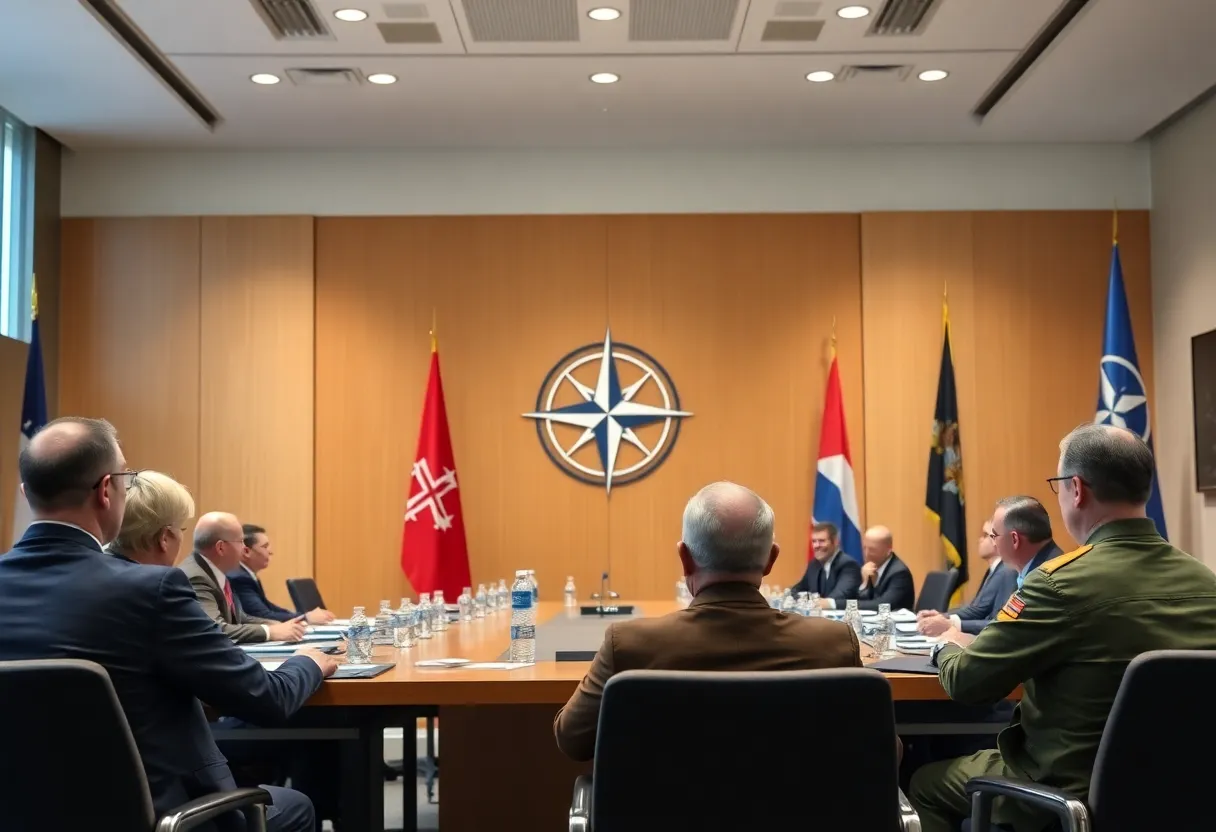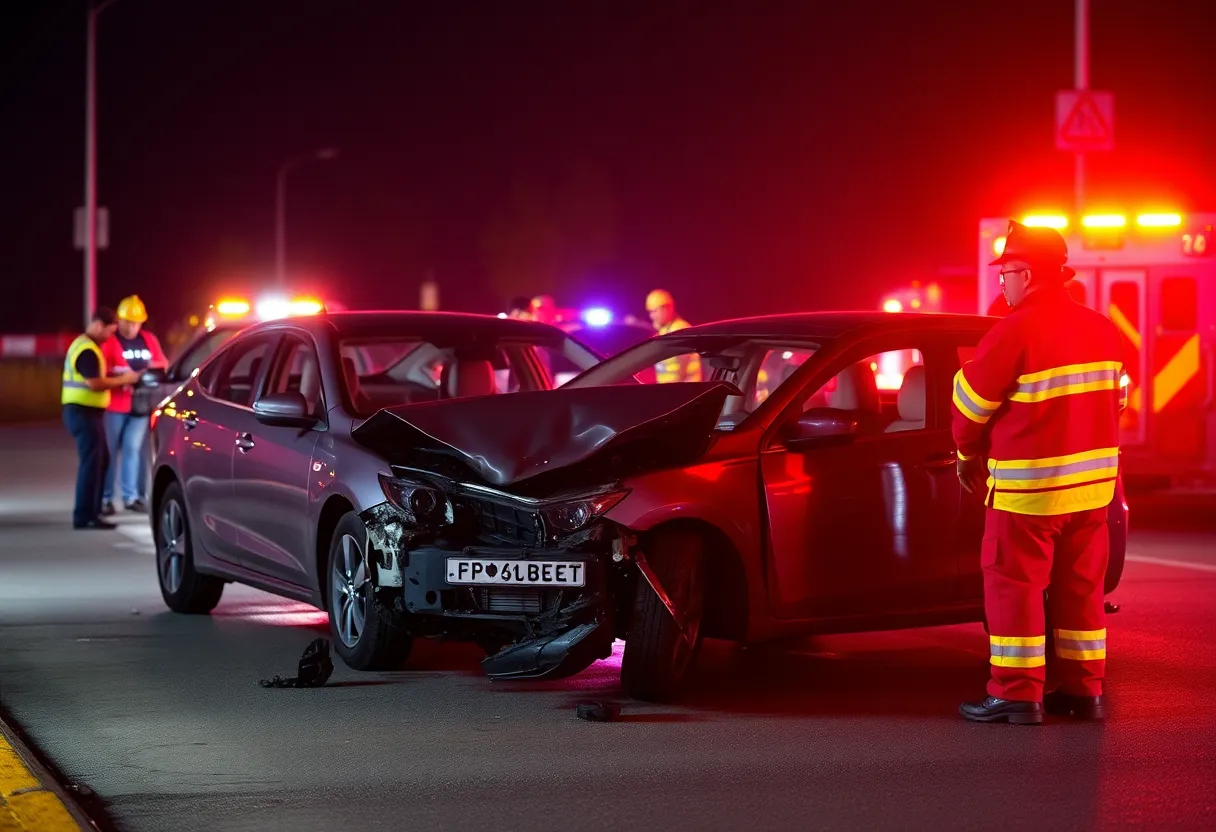News Summary
In a pivotal NATO meeting in Brussels, U.S. Defense Secretary Pete Hegseth announced a strategic shift in military support for Ukraine, deemphasizing NATO membership aspirations and urging European nations to take on more responsibilities. This reflects a change from previous U.S. policies and raises concerns among European allies about their defense commitments against Russia. Hegseth suggested a more cautious approach to troop deployments and emphasized increased European defense spending, indicating a new dynamic in NATO’s approach to international alliances amidst ongoing tensions.
Major Shift in NATO’s Support for Ukraine
In a recent NATO meeting in Brussels, a significant change in strategy regarding Ukraine’s military support was announced, and it certainly raised some eyebrows. U.S. Defense Secretary Pete Hegseth was in attendance, marking his first official engagement with NATO as part of the Trump administration. This gathering was primarily focused on coordinating military aid for Ukraine amid ongoing tensions with Russia.
What’s New on the Table?
One of the most striking claims made by Hegseth suggests that the idea of NATO membership for Ukraine has taken a backseat, described as unrealistic. This marks a noticeable shift from the earlier U.S. policy, which had shown some support for Ukraine’s aspirations to join the alliance. Hegseth also pointed out that hopes of Ukraine returning to its pre-2014 borders are likely unrealistic. This includes areas like Crimea and Donbas, currently under Russian control. Instead, he indicated that a negotiated settlement with Russia might be the way forward for achieving peace.
The Shift in Support Responsibilities
What does this mean for Ukraine? Well, it appears that the Trump administration is looking to shift the weight of military and financial support away from the U.S. and onto European nations. This suggests a reduced involvement from the U.S. in Ukraine’s defense, which has left European leaders feeling a bit concerned. They worry that such a stance might come off as a capitulation to Moscow, complicating alliances in the region.
Europe Takes Center Stage
Hegseth also called on NATO members to beef up their defense spending, proposing an increase from the current goal of 2% of GDP to 5%. He emphasized that NATO allies need to step up to provide what he termed “robust security guarantees” to Ukraine. But here’s the twist: he insisted that these guarantees should be carried out by capable European and non-European troops, with no direct involvement from American forces.
Deployment Concerns
When discussing future troop deployments in Ukraine, Hegseth made it clear that these should not fall under NATO’s collective defense umbrella, known as Article 5 protections. Instead, they should be part of a non-NATO mission. This nuanced approach highlights a cautious and strategic recalibration of how NATO plans to handle military aid and troop involvement in Ukraine going forward.
Reactions from Ukraine and European Allies
Unsurprisingly, Hegseth’s remarks have generated a mix of apprehension and concern, especially in Ukraine, where dreams of NATO membership have been a rallying point. Ukrainian leaders have consistently opposed any territorial concessions, fearing this could undermine their sovereignty. Additionally, NATO allies have collectively provided an impressive tally of over $126 billion in military aid to Ukraine. However, with Hegseth’s new stance, it seems that European nations will now take on a more prominent role in supporting Ukraine’s defense.
Trump’s Take on Financial Aid
Adding another layer to the story, President Trump has previously critiqued American aid to Ukraine, arguing it to be too costly for U.S. taxpayers. He has even suggested that Ukraine ought to compensate the U.S. for its support by offering access to some of its resources. These statements, coupled with Hegseth’s recent remarks, indicate a clear disparity from the stronger support Ukraine enjoyed during the Biden administration, raising questions about the future of U.S.-Ukrainian relations.
What’s Next for Ukraine?
As the situation unfolds, it remains to be seen how Ukraine will adapt to this shift in NATO and U.S. strategy. While military aid will still be provided, the onus appears to be shifting toward Europe to increase support and military contributions. The changing dynamics undoubtedly suggest a new era in NATO’s approach to international alliances and commitments in times of conflict.
Deeper Dive: News & Info About This Topic
- Reuters
- BBC News
- ABC7 New York
- Al Jazeera
- Washington Post
- Wikipedia: NATO
- Google Search: NATO Ukraine support
- Google Scholar: NATO Ukraine relations
- Encyclopedia Britannica: NATO
- Google News: NATO Ukraine







